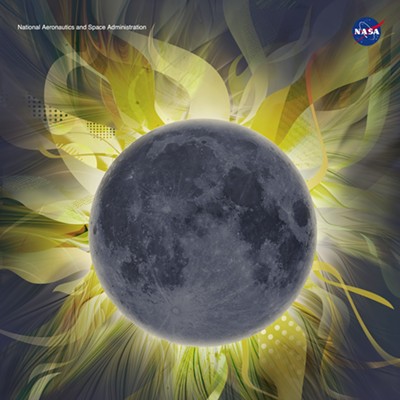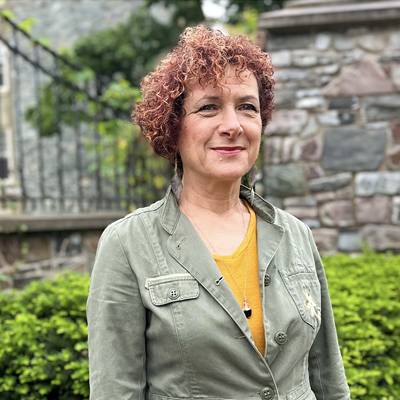If you want to know how prevalent cocaine is in Halifax, just ask a friend. Chances are they've heard about where to get it or someone who's used it. Cocaine, once known as the champagne of drugs, has become a $100 can of Red Bull.
"It's become, by far, way more prevalent," says JP Crowell, a Mount Saint Vincent University student. He says he saw three groups of people doing lines at this past summer's Nickelback concert. "I frequently hear stories about people doing lines at clubs and everyone's just turning a blind eye."
Stefen Hancherow, student president of NSCAD University, agrees. He says he always hears about people snorting at parties. Hancherow hasn't noticed a specific increase, but that's because he isn't into that scene.
"I could definitely not afford to do cocaine once a week if ever," he says. "It's really sad and I wish there was more being done to stop it."
According to the 2004 Canadian Campus Survey, university-aged people are the highest percentage of cocaine users. But only 2.1 percent of those attending university are using, compared to 7.4 percent not in school. Hancherow thinks—enrolled in school or not—if a cocaine user looks like a university student it could make the public less sympathetic to the fight for lower tuition.
But for all the rumour and hearsay, there is a startling lack of hard data available. The most recent statistics are from 2004. The Canadian Addiction Survey found that 7.1 percent of Nova Scotians have used cocaine. That's under the 2004 national average of 10.6 percent, but higher than the 1994 national average of 3.8 percent.
When it comes to looking at cocaine on campuses the stats are more obscure, but numbers are also up. According to the 2004 Canadian Campus Survey, 10.9 percent of students in Atlantic Canada have used cocaine or another illicit drug beside marijuana in the past year. That's above both the 2004 and 1998 national averages.
The Canadian Centre on Substance Abuse is working on providing clear information on specific drug uses on campuses by the province. This is important because police, schools and health officials in Halifax are hesitant to do much about cocaine use until the numbers warrant a response.
Nova Scotia Addiction Services provides treatment and services for Halifax. While university-aged students are more likely to use cocaine, the addicts coming through the door of Addiction Services seeking treatment don't reflect this statistic. To reach those not actively seeking treatment, Addiction Services meets with student life coordinators, campus health centre representatives and student residence advisors every September.
The university demographic isn't one that Addiction Services targeted in the past. An alcohol awareness campaign began last year, complete with advertising aimed at students, the result of a study that highlighted widespread alcohol abuse on campuses across the province. But when it comes to cocaine, the data just isn't there to start a similar campaign: Instead, it's lumped into the broad category of illicit substances.
"It's not that we're not concerned, because harms do arise, but when you look at the prevalence of illicit drugs on campuses in Atlantic Canada the numbers aren't there," says Amanda Hudson of Addiction Services.
The Halifax Regional Police's drug division has also been noticing a change in the amount of cocaine seized during drug searches. A good search used to uncover 10 to 15 grams. Now, that same search is more likely to find 50 grams.
Detective Kenny Burton, with the police's Integrated Drug Unit, says cocaine is Halifax's hard drug of choice. The police have received tips about campus dealers and searches have been conducted but they've yet to find anything. Burton says they can't just go and bust up parties because they would take a hit from the media for attacking the little guy.
Burton isn't sure what can be done about casual cocaine use at parties. He says the prevailing laissez-faire attitude around decriminalization has opened the door for harder drugs. "When I went to university it was down to The Graduate for 49-cent draft. Now the bar isn't there and people are doing hard drugs," he says. "These university students say they want a greener planet and want to save the world, but they also think it's fine to buy a gram from organized crime. It's very hypocritical."
The RCMP have also noticed a rise in cocaine's popularity, which is why they made a point to highlight the drug when they visited the Dalhousie Health Centre last year.
Derrick Enslow is Dalhousie's health promotion program manager; he works with students through the Peer Health program. He says there's no data available on cocaine use at the school, but they're taking the RCMP's warning seriously. Doctors now watch for symptoms of cocaine addiction and Enslow provides more information to students.
The Peer Health program was also reconstructed to reflect the RCMP's concerns. Starting this school year, students will be able to go online and anonymously ask questions and chat about addiction and other health concerns, an idea modelled after a few American campus websites.
"With any illegal drug use there's a culture of not self-identifying, so this approach provides that avenue for students to approach us and seek help," says Enslow. "We're trying it this year to see how effective it is and how often students are using it...our service, that is."
Most universities in the city have yet to take a similar approach as Dalhousie. Both Saint Mary's University and the University of King's College say there is no indication that students are using cocaine. Tyler Deacon, vice president of student life at Mount Saint Vincent University, says he hangs out with partygoers and he's yet to see it. "Some people do it for parties but never more than once," he says.
A committee was formed between the MSVU health office and the school's diversity centre to examine the issue of drug use. But Robin McIsaac, MSVU's director of public affairs, says cocaine use isn't an issue. "If our health office needed to do more they'd be taking the lead to developing a strategy to deal with it," she says.
Faced with a lack of specific information, it's difficult for schools to do anything about cocaine or even to know if it's a problem. There will be a new Canadian Addiction Survey and Canadian Campus survey next year that could help address the issue, but until then, JP Crowell says cocaine will remain alive and well at student parties and in bars.
"It seems it's only going to get worse and I only say that because it's becoming more and more casual to use," he says. "As soon as it becomes too common you'll see somebody start doing something about it because people are going to start getting hurt."
A Scanner Darkly freaked you straight. If you make a movie about your habit, click here.
If you take up a new intoxicant, click here. Or, consult the Table of Contents.










